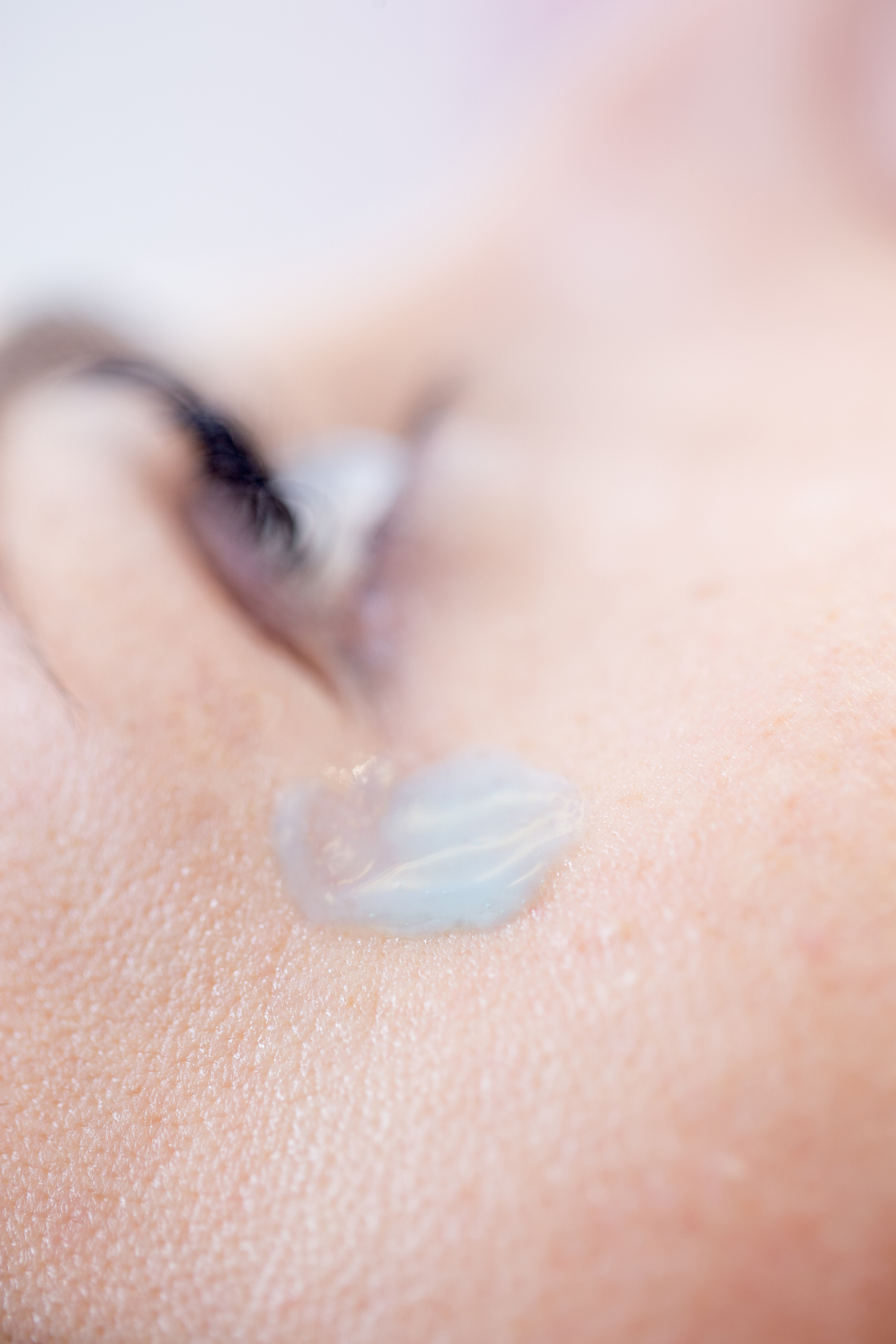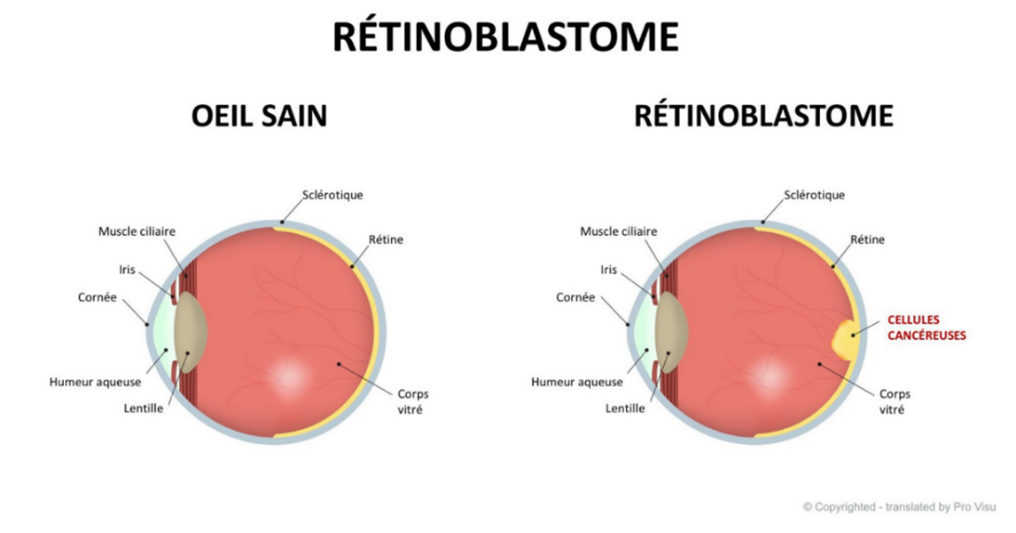Diseases
Rétinoblastoma

Other terms
- Retinal glioma
- Retinal glioma
- Retinal neuroblastoma
- Hereditary retinoblastoma
- Familial retinoblastoma
Definition
Retinoblastoma is a malignant tumour of the retina that usually manifests itself up to the age of 5, although the vast majority of cases of retinoblastoma are diagnosed in the first two years of life.
There are 3 types of retinoblastoma:
- Non-hereditary, 60% of cases, affecting only one eye
- Sporadic hereditary, 30% of cases
- Familial hereditary, 10% of cases
In 70% of cases, retinoblastoma is unilateral (affecting only one eye), although children with hereditary disease often have bilateral involvement. The genetic abnormality they carry predisposes them to the development of another cancer, which is why they need to be monitored regularly.
Causes
Retinoblastoma occurs when the retinoblastoma gene, called RB1, is inactivated by a mutation or abnormality on chromosome 13, where it is located. Cell division then becomes uncontrolled, leading to the formation of tumours and the progressive destruction of vision.
In the case of non-hereditary retinoblastoma, the mutation occurs during cell replication, which takes place after conception. In hereditary retinoblastoma, the mutation is already present in the gametes.
Symptoms
The main sign of retinoblastoma is leukocoria, an abnormal whitish reflection in the pupil. This is often seen incidentally, for example in photographs taken with a flash, as the centre of the eye is white rather than red.
Strabismus can also be a symptom, although like leukocoria, it requires an eye examination within seven days to confirm the diagnosis and ensure that it is not related to another eye condition.
In rare cases, retinoblastoma may also be suspected if there is ocular inflammation, decreased vision, redness of the eye or pupil deformity.
Diagnosis
It is important for parents and paediatricians to pay close attention to children's eyes from an early age, because if detected early, retinoblastoma has a good chance of being cured. The earlier the diagnosis, the lower the risk of metastasis and spread to neighbouring structures such as the orbit, optic nerve or brain (which can destroy vision and be life-threatening).
If there is a suspicion, the back of the eye should be examined using indirect ophthalmoscopy (the pupils are dilated under general anaesthetic) to detect signs on the retina or in the vitreous, and the diagnosis confirmed by ultrasound, MRI or orbital computed tomography (CT). In the case of choroidal or optic nerve involvement, a lumbar puncture or brain MRI scan is required to look for any metastases.
Treatments
Several treatments are possible, with the primary aim of preserving the child's life. The choice of treatment depends on a number of factors:
- Age
- Type of involvement (unilateral or bilateral)
- Whether or not it has spread to neighbouring structures
- The presence or absence of metastases
- Any previous treatment history
Intra-arterial chemotherapy of the ophthalmic artery (chemotherapy targeted at the blood vessels supplying the tumour) and treatment with laser or cryocoagulation (freezing of the lesion) may be enough to destroy small tumours and preserve vision. However, when the disease is at an advanced stage, enucleation with removal of part of the optic nerve is sometimes the only option available to prevent the spread of cancerous cells.
With current treatments, the survival rate is close to 98%. What's more, when retinoblastoma is bilateral, in most cases at least one eye can be saved with functional vision, even in advanced cases.
Frequency
1 child in 17,000 is affected by retinoblastoma, which represents between 4 and 5 cases per year in Switzerland. These children are generally under 5 years of age.
Retinoblastoma is a rare disease, even though it is the most common intraocular cancer in children, accounting for around 4% of paediatric cancers. Girls and boys are equally likely to be affected by retinoblastoma.
Prevention
There is no specific means of prevention, but a child whose family has a history of retinoblastoma should be carefully monitored. The recommendations are as follows: examine the child shortly after birth, then 3 times a year until the child is 4 years old.
References
Rétinoblastome (RB) - Laboratoire d'oncogénomique - CHUV
Rétinoblastome - Hôpital ophtalmique Jules-Gonin
Rétinoblastome - Pédiatrie - Édition professionnelle du Manuel MSD (msdmanuals.com)
Bien vu !, le magazine de votre santé visuelle (N°8). Rétinoblastome : l’expertise lausannoise. Page 24, septembre 2022

